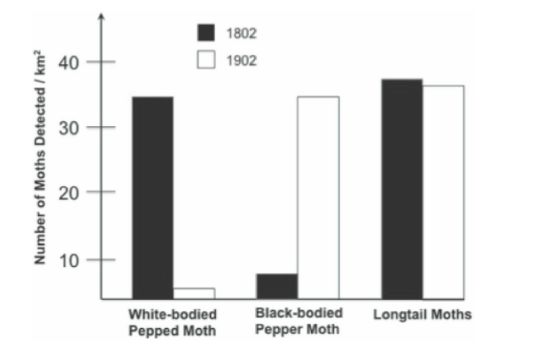- 翰林提供学术活动、国际课程、科研项目一站式留学背景提升服务!
- 400 888 0080
【每日一题】AP 生物 20180123
AP Biology精编
During the industrial revolution, a major change was observed in many insect species due to the mass production and deposition of ash and soot around cities and factories. One of the most famous instances was within the spotted moth populations. An ecological survey was performed where the number of spotted moths and longtail moths were counted in 8 different urban settings over a square kilometer in 1802. A repeat experiment was performed 100 years later in 1902. The results of the experiment are shown below.

Which of the following statements best explains the data?
(A) As time passed from 1802 to 1902, the frequency of white-bodied pepper moths increased and black-bodied pepper moths decreased.
(B) As time passed from 1802 to 1902, the frequency of white-bodied pepper moths decreased and black-bodied pepper moths increased.
(C) As time passed from 1802 to 1902, the frequency of white-bodied pepper moths and black-bodied pepper moths both increased.
(D) As time passed from 1802 to 1902, the frequency of white-bodied pepper moths and black-bodied pepper moths both decreased.
题目解析
本题是读图题。图中黑色柱子代表1802年的蛾子数量,白色柱子是1902年的蛾子数量。
图表的数据表示原来的蛾子是白色为绝大多数,现在变成了黑色为绝大多数。
答案选择(B)
As time passed from 1802 to 1902, the frequency of white-bodied pepper moths decreased and black-bodied pepper moths increased.。
题目选自Cracking the AP Biology 2015 Edition

最新发布
© 2025. All Rights Reserved. 沪ICP备2023009024号-1








